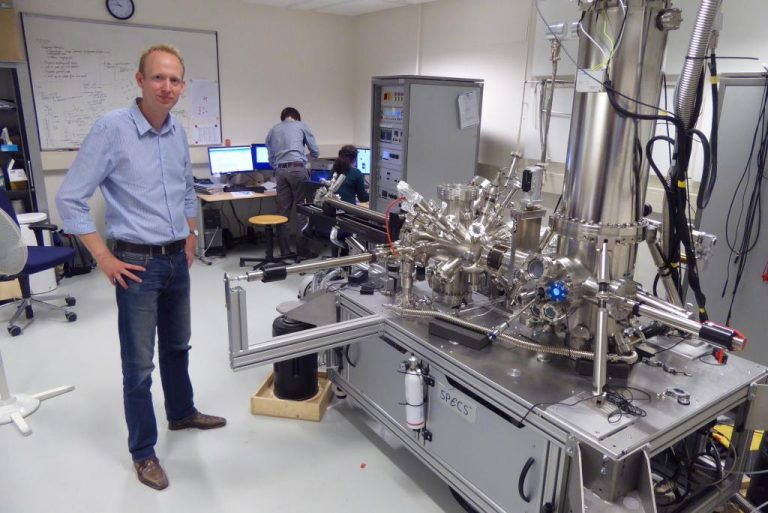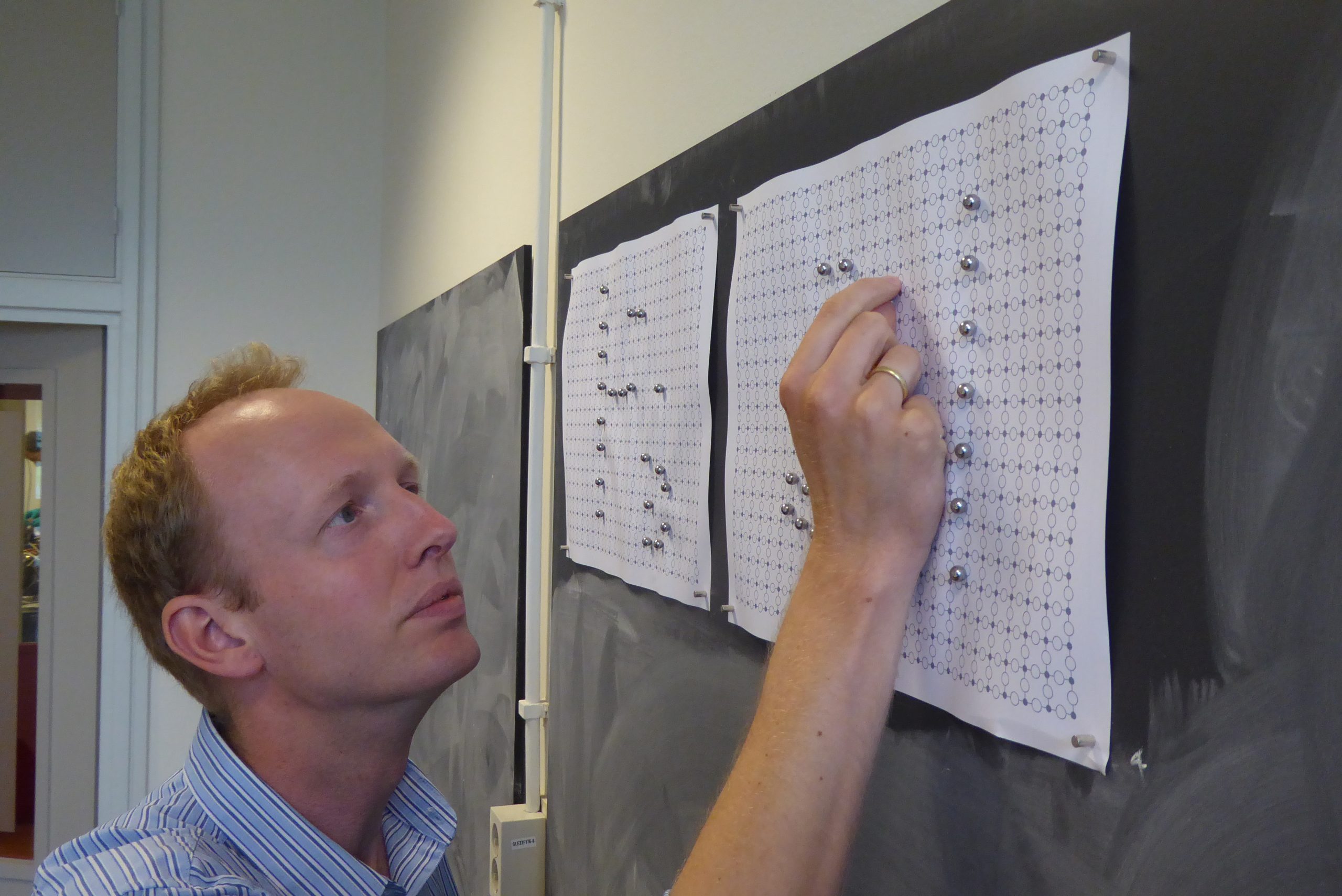Nanophysicist Dr Sander Otte was appointed Antoni van Leeuwenhoek Professor on 29 May 2018. His 8,000 bit atomic memory was world news two years ago. What is he working on now?
The Sander Otte Lab is housed in the basement of the Applied Physics building of the Faculty of Applied Sciences. Four PhD students, two postdocs and a couple of students work here because shifting atoms around is very sensitive to even the weakest vibrations. Inside a complex ensemble of stainless steel tubes at cryogenic temperatures and under high vacuum, atoms are picked, placed and pushed around. Two of these complex instruments are currently available to investigate the material properties of different atomic configurations.

The mission statement of your Otte Lab is ‘creating matter atom by atom’. How does one achieve that?
“For this, we use a technique called Scanning Tunnelling Microscopy (STM). The technique was discovered in the 1980s. An STM is a microscope that does not have lenses. It basically feels a surface with a very sharp needle that scans the surface line by line. We use a quantum-mechanical principle called tunnelling whereby a very sensitive precise probe allows you to feel individual atoms. This was demonstrated in the 1980s. Since the 1990s we can use STMs not only to see atoms, but to also move them around.”
I’ve read that the configuration of atoms determines a material’s characteristics. Can you give an example of how a different arrangement of atoms gives rise to different behaviour?
“If you take a single magnetic atom, its magnetic moment acts like a compass needle that can point in any direction. If you put two of these atoms next to each other, they can either align or anti-align their magnetic moments depending on the exact arrangement of the two atoms. In bulk iron, the compass needles of all the magnetic moments of the iron atoms point in the same direction. This is called ferromagnetism. But in our lab, we also experiment with iron atoms that we arrange slightly differently on the surface. They then anti-align their compass needles. This way, we can build an antiferro magnet out of iron atoms.”
How does that show?
“We can read out the magnetic state of each atom. We do that by using the same STM needle, but we make the needle slightly magnetic itself. It basically feels the orientation of each compass needle of each atom. And we can see that it alternates from up to down, up to down. We then know we have made an antiferro magnet.”
How does that differ from normal iron?
“Antiferro iron does not feel magnetic. If you put it close to a magnet, you don’t feel any interaction because overall there is no magnetisation.”
It would take forever to build these materials atom-by-atom, wouldn’t it?
“We are never going to build a bridge or a skyscraper this way. But for most of our current-day technology, the functionality happens on a very small scale. If you take the transistor, for example, only a tiny piece of the semiconductor is the functional part. The functional part of many of our devices is already at the 100 nanometre scale. We have been able to position every atom in a 100 by 100 nanometre array in exactly the position we wanted. So using this technology is not that far-fetched.”
There is a trend in technology to miniaturise down to almost the atomic scale – but you’re working your way up in the other direction?
“Exactly. The first approach is called top-down technology, and that has brought us super far. But if you can combine that with bottom-up technology, and the technologies can meet at the functional level, that would be fantastic.”
You have been awarded the Antoni van Leeuwenhoek Professorship. What does that mean for you personally?
“It shows that the University has faith in my research and wants to bring it to a higher level. This might help me to acquire new grants and to see how we can bring the relatively small group that I’ve been running up to now to a level where we can see it developing to the institutional level. The visibility might also help in setting up contacts with industrial partners.”
What are your goals for the next five to 10 years?
“My heart is mostly with magnetism. Until now, we have focused on static magnetisation, but magnetisation dynamics is very promising. The ability to access the dynamics of custom-designed atomic spin structures coherently and in a controlled way, is very promising.
Apart from that, I would love to see if we could interact with companies more. I would like atom-manipulation to be at a slightly higher level: parallel fabrication, larger scale and more automated procedures. But then you need to involve engineers and R&D people that are used to thinking in different ways about these things. I want to see the ability to build and shape the world atom-by-atom not at the 10 to 100 atom scale, but at the 10,000 to a million, to a billion atoms scale. That should be possible.”


